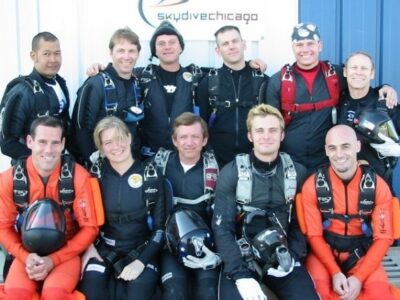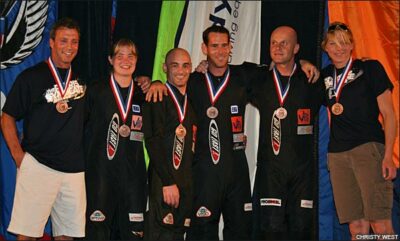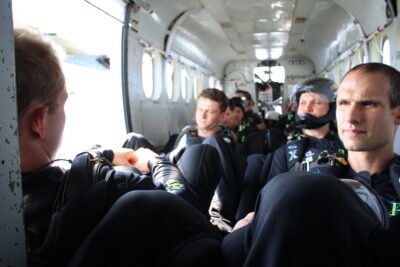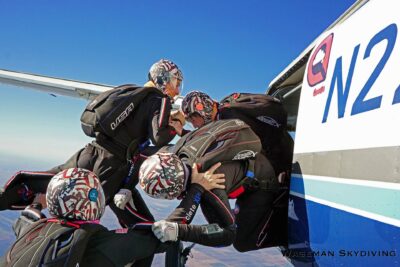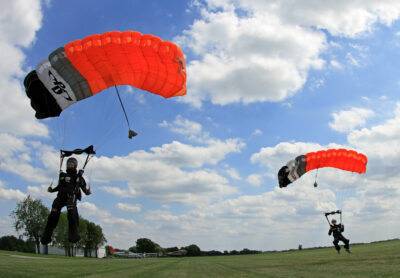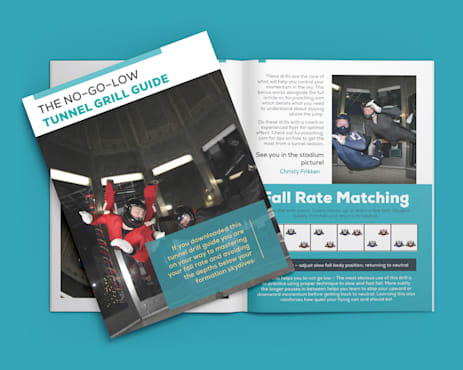The Stuff You Need To Know For Your First US Nationals
Monday, May 31, 2021

If you have never been to US Nationals, you probably have a lot of questions. Heck, even if you HAVE been to Nationals, you might still be wondering.
I am running a Facebook live chat on June 11, 2021 at 5pm PST about this topic! If you haven’t been to US Nationals, or are curious to know more please join me on Facebook!
This guide will walk you through the basics of how the event is typically structured.
How the meet will go – logistics
Practice days/jumps
The days beforehand are when teams start arriving and doing practice jumps. There is typically a special rate for training skydives leading up to the meet.
Things get hectic the day beforehand, with teams scrambling to practice and other competitions taking place.
Arrival/Registration
Pre-registration is usually available online and can save a little time when you get there. Registration typically closes the night before the jumping starts. You must be physically present to register before it closes – pre-registration is not enough.
Events like 8-way, 10-way, and 16-way will list a registration deadline, but it might get pushed backed until the end of the prior event if the weather is good. The delay also allows more 4-way teams to form pickup teams. You might have time for a practice jump between events, but it isn’t a guarantee.
The night before – draw brief and prep (video brief)
For 4-way, the DZ will close registration and hold a briefing the night before. At this briefing, you’ll get any relevant competition information, safety information, critical scheduling notes, the number of passes per load, your team number, and of course, the draw. The video people will be pulled aside for a separate briefing.
Pay extra attention to your team number, which division is going first, how many planes will be running, and takeoff time so you can get a rough estimate of when you need to be at the DZ.
Once you have the draw in hand, it is recommended you walk and engineer the number of dives you expect to do the next day (the answer is seven). If you have engineering questions, creep those portions to decide. Finally, fully walk and creep the first dive. I advise against fully prepping all of the rounds; it is better to get some rest.
Morning of
US Nationals always starts very early in the morning. You can use math to figure out how many loads go before you to get an approximate starting time, but make sure you are there with enough time to check your gear, prep, and feel ready!
The pace of meet, the time between
The rules state you will have an hour between getting back to the DZ and takeoff. However, they often speed this up a bit to 45 minutes with everyone’s agreement.
It goes fast, so have a plan. My recommendation is to drop your gear and prep immediately. Walk the dive every 20-30 minutes.
Make sure you are hanging out in a place so you can hear or see the calls. Don’t wander off; always tell each other where you are in case the group needs to assemble quickly.
Each Day
There is no limit to the number of jumps they may ask you to do in a day. I have done ten jumps in a day at nationals. However, the most common goal is 6-7 on the first day. You’ll hear announcements when you are finished.
End of meet
The party goes on until the meet completes. Once you land from your last round, you are not officially excused. Technically it isn’t done until the judges score and sign off your final dive. They’ll announce when the awards ceremony will happen as the meet winds down.
Closeout
There will be a medal ceremony on the same night as the event. This ceremony is different from the banquet, scheduled in advance, and will include multiple events and disciplines. If you need to bug out quickly for your flight, you can go the second they sign off that paper.
The important stuff you aren’t thinking about
Exciting/emotion
Competitions are exhilarating! This energy is why we love them. Be prepared to be excited, nervous, and full of energy. Remember, those butterflies are your body’s way of preparing you to perform!
Team issues
Some people struggle with handling stress well. Unforutenly I occasionally see team tensions bubbling to the surface under pressure. To combat this, practice competing as a team, talk about how you will deal with good and bad rounds, and personally enter a burst-free chill-out bubble.
New dropzone
You are probably jumping at a new DZ with new planes, new rules, new landing areas, and new weather patterns. Jump there before the meet if at all possible. Even researching the dropzone beforehand by looking at the policies and landing area is a great help!
Longer calls, longer days
Compared to regular team training, the calls between loads are slow. The days can also drag on, especially if the weather enters the picture. Make a plan to keep your energy level even throughout the whole day.
Lots of people
US Nationals, especially 4-way, is enormous. You’ll see tons of people you know and meet many new friends. But that means things are often crowded and busy. If you need solo time to stay sane, make sure you have the means to escape to the buzz.
Distractions
There are usually all kinds of shenanigans going on at nationals. People are arguing over stupid stuff like loading order, other team’s drama, crazy rumors, complaining about basically anything, speculation over the weather, and more!
When you find yourself getting wrapped up in anything, refer to my handy chart below.
Judging
If you aren’t used to being judged, you will probably find it harsher than you expect. Don’t get wrapped up in whether a bust was “fair” or not. There is nothing you can do about the past infringements. Just use it as feedback and focus on good, clean skydiving with clear separation going forward.
Slating
To label a video, teams must “slate” or show a paper with their team number on it before exiting. Currently, the video person gets a stack of papers – one for each round. They will hold it up in front of the video before you get out. Someone can stuff it into their jumpsuit before climbing out.
Faster jump run
Jump run speed in the competition will be 85-95 knots. This speed is often faster than the jump run at your home dz, so be prepared for more wind on the climb out.
Slight differences in planes
Video people will notice significant differences in handles and steps on otters. Other teammates will see things that can feel different enough to be weird; benches, mats, or floor surfaces. It is helpful to get a peek at the planes before round one.
What-ifs
Landing off
If you land off, the team should clump together if safe. Walk back together, and note the time. If it took you a long time to get back, consider informing the meet director if you think you will need more time.
Weather
The weather has a way of inconveniently popping up during our carefully scheduled event. Meet management will have some official means of conveying any hold information – either a physical place or somewhere on the internet.
If it is doomsday, the director may excuse you for a while. If it is coming and going, they may have you stick around. Manage your energy levels for a long and unpredictable day!
Gear issues
It is nice to have a backup plan if you need another rig. Think about bringing a second if you have one.
Most major dropzones have a loft that can help, and many people are willing to help you out by lending gear in a pinch.
Guest status
If you don’t qualify for Nationals because of nationality rules, you can register as a guest team. You will get a score, but you will not get a medal or count in the official rankings.
It can allow a group to compete when it would break a technical rule – late registration or swapping someone out for a non-official alternate in case of an injury.
Guest status is always at the meet director’s discretion.
Assholery
There are rare cases of teams being bad sports. It can be offensive behavior on the plane or being obnoxious. When at all possible, shrug it off and move on. If it is too outrageous, there are rules to protect you; try to resolve it with the meet director.
That should give you some idea of how your first US Nationals will happen! There is a lot more, of course, but with this guide, the skydiver’s competition manual, and lots of experienced people, you will figure the rest out as you go. If you have questions about how Nationals is structured, contact me, and I’ll be happy to help!
Join me for a Facebook live chat on June 11, 2021 at 5 pm PST about US Nationals! If you haven’t been to US Nationals, or are curious to know more please join me on Facebook!
Tags: 4way, 8way, competition, team
